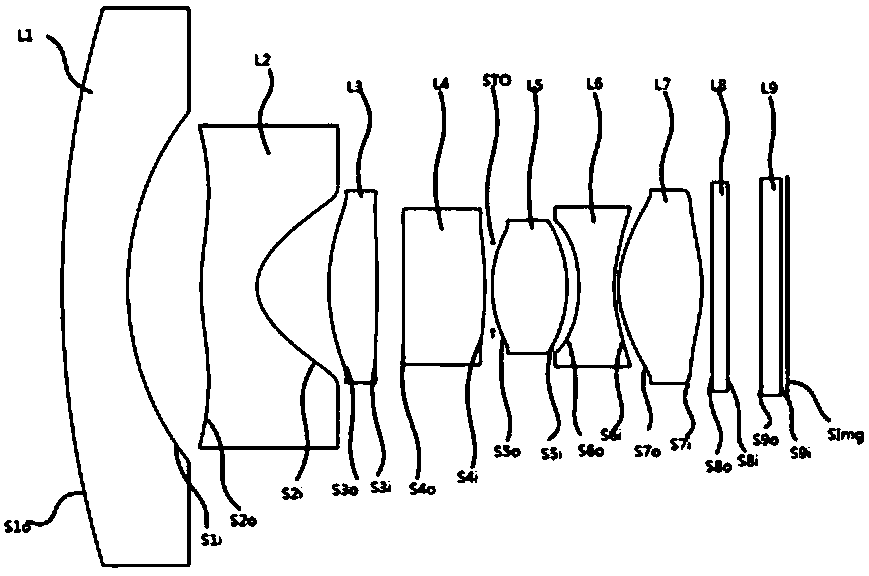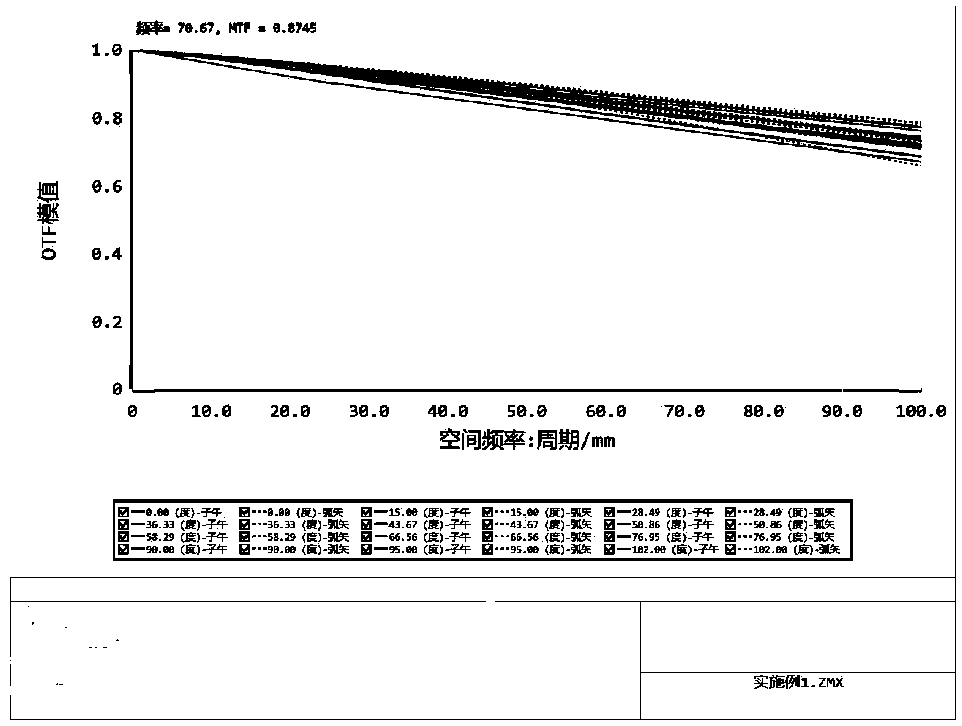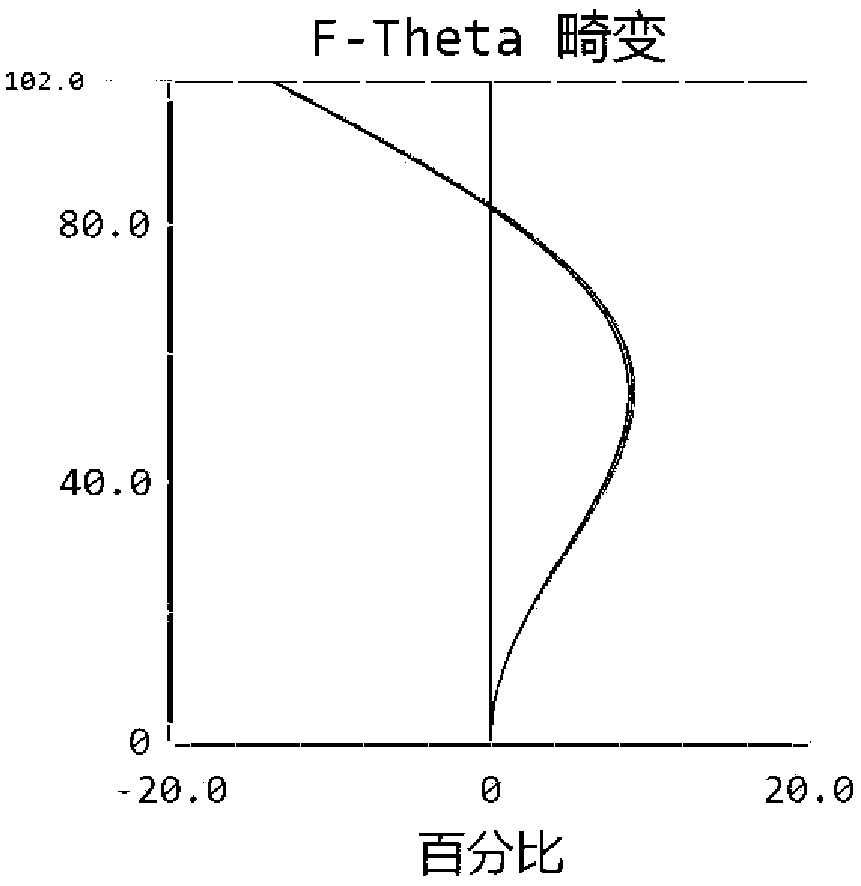Fixed-focus optical system
An optical system, negative optical power technology, applied in the field of optical systems, can solve the problems of long length, unfavorable lens miniaturization requirements, etc., and achieve the effects of low temperature drift, temperature drift, and high resolution
- Summary
- Abstract
- Description
- Claims
- Application Information
AI Technical Summary
Problems solved by technology
Method used
Image
Examples
Embodiment 1
[0030] Reference attachment for the seven-piece fixed-focus optical system of this embodiment figure 1 . From the object side to the image side, a first lens L1 with negative refractive power, a second lens L2 with negative refractive power, a third lens L3 with positive refractive power, and a fourth lens with positive refractive power are arranged in order from the object side to the image side. L4, aperture stop STO, fifth lens L5 with positive refractive power, sixth lens L6 with negative refractive power, seventh lens L7 with positive refractive power, filter L8, chip protection glass L9.
[0031] Among them: L1 is the convex surface of the object side S1o, the negative lens of the image side S1i concave surface, the focal length is f1, L2 is the central convex surface of the object side S2o, the negative lens of the concave surface of the image side S2i, the focal length is f2, L3 is the object side S3o and the image side S3i All are convex positive lenses, focal length is ...
Embodiment 2
[0047] Reference attachment for the seven-piece fixed-focus optical system described in this embodiment Figure 5 .From the object side to the image side are arranged in sequence: a first lens L1 with negative refractive power, a second lens L2 with negative refractive power, a third lens L3 with positive refractive power, and a fourth lens with positive refractive power. Lens L4, aperture stop STO, fifth lens L5 with positive refractive power, sixth lens L6 with negative refractive power, seventh lens L7 with positive refractive power, filter L8, chip protection glass L9.
[0048] Among them: L1 is the convex surface of the object side S1o, the negative lens of the image side S1i concave surface, the focal length is f1, L2 is the central convex surface of the object side S2o, the negative lens of the concave surface of the image side S2i, the focal length is f2, L3 is the object side S3o and the image side S3i All are convex positive lenses, the focal length is f3, L4 is the conv...
Embodiment 3
[0061] Reference attachment for the seven-piece fixed-focus optical system described in this embodiment Picture 9 . From the object side to the image side are arranged in sequence: a first lens L1 with negative refractive power, a second lens L2 with negative refractive power, a third lens L3 with positive refractive power, a second lens with negative refractive power Four lens L4, aperture stop STO, fifth lens L5 with positive refractive power, sixth lens L6 with negative refractive power, seventh lens L7 with positive refractive power, filter L8, chip protection glass L9.
[0062] Among them: L1 is the convex surface of the object side S1o, the negative lens of the image side S1i concave surface, the focal length is f1, L2 is the central convex surface of the object side S2o, the negative lens of the concave surface of the image side S2i, the focal length is f2, L3 is the object side S3o and the image side S3i All are convex positive lenses with focal length f3, L4 is concave o...
PUM
 Login to View More
Login to View More Abstract
Description
Claims
Application Information
 Login to View More
Login to View More - R&D
- Intellectual Property
- Life Sciences
- Materials
- Tech Scout
- Unparalleled Data Quality
- Higher Quality Content
- 60% Fewer Hallucinations
Browse by: Latest US Patents, China's latest patents, Technical Efficacy Thesaurus, Application Domain, Technology Topic, Popular Technical Reports.
© 2025 PatSnap. All rights reserved.Legal|Privacy policy|Modern Slavery Act Transparency Statement|Sitemap|About US| Contact US: help@patsnap.com



